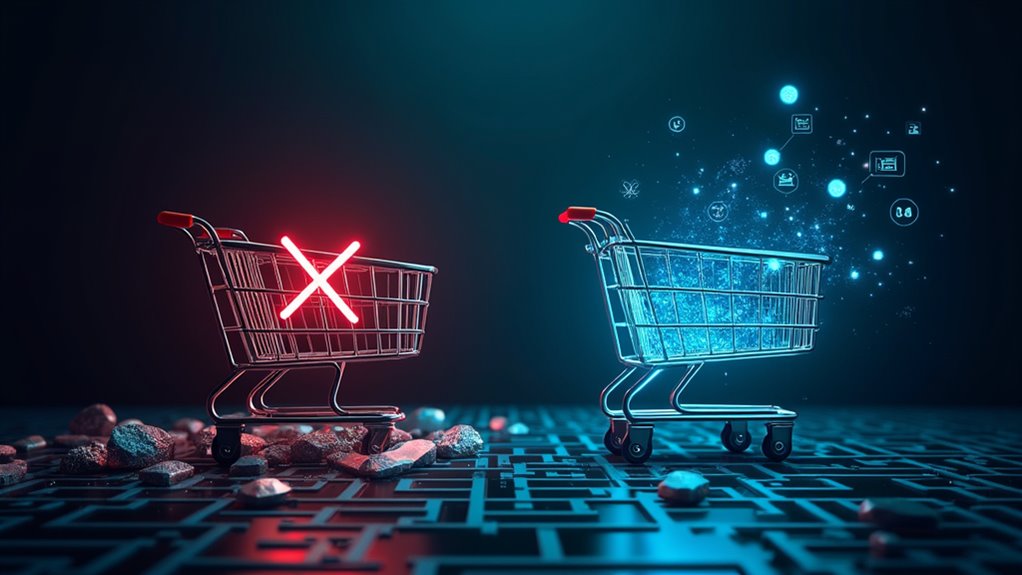AI appears to be the e-commerce industry’s best hope against cart abandonment‘s staggering 70% rate. By identifying abandonment-prone shoppers, personalizing experiences, and optimizing recovery emails (which can boost conversions by 50%), AI tackles the root causes—surprise fees, complicated checkouts, and inconsistent experiences. With $260 billion in recoverable orders annually, retailers face a simple choice: embrace AI solutions or watch customers continue their digital Irish goodbye. The numbers don’t lie, but there’s more to this retail therapy session.
How often have you filled an online shopping cart only to abandon it at the last moment? You’re not alone—a staggering 70.19% of online shoppers do exactly the same thing, creating a $4 trillion global economic black hole that keeps ecommerce executives up at night.
The reasons behind this digital French exit are painfully predictable. Nearly half of shoppers bail when surprise costs appear at checkout (surprise, your $20 shirt comes with $15 shipping!). Another 41% simply refuse to pay delivery fees that cost more than their morning latte. And let’s not forget the 22% who give up on checkout processes so complicated they might as well be filing their taxes.
Shoppers don’t abandon carts—they escape retail ambushes disguised as shipping fees and checkout labyrinths.
Mobile shopping—that magical activity we do while pretending to work—is even worse, with abandonment rates hitting a jaw-dropping 80.2%. It seems our patience is as short as our smartphone attention spans.
Enter artificial intelligence—ecommerce’s new digital therapist. AI systems can now identify which shoppers are about to ghost their carts and intervene with perfectly timed charm offensives. Those abandoned cart emails you get? When AI optimizes them, they’re opened 39% of the time and actually clicked on 23% of the time. With consistent experiences being cited by 42% of users as a key advantage, AI ensures shoppers receive reliable service across all interactions.
The regional differences are fascinating too. APAC shoppers are the most fickle (81.01% abandonment), while Americans show slightly more checkout commitment. Luxury shoppers, ironically, abandon carts most frequently—perhaps because that $5,000 impulse handbag purchase requires a moment of reflection.
The recovery opportunity is enormous—$260 billion in recoverable orders annually. Companies using three AI-powered recovery emails instead of just one see a staggering difference: $24.9 million versus $3.8 million in recovered revenue. According to research, abandoned cart recovery emails demonstrate an impressive 50% conversion rate when properly implemented. Looking at historical data, this problem has been remarkably consistent, with abandonment rates hovering around 75-80% since 2013.
Perhaps most importantly, AI works behind the scenes to fix what’s actually broken—identifying checkout friction points, personalizing the experience, and deploying chatbots to answer “Do these digital shoes run small?” at 3 AM when human service agents are sensibly asleep.
The question isn’t whether AI can solve the abandonment crisis—it’s whether retailers will embrace it quickly enough.







